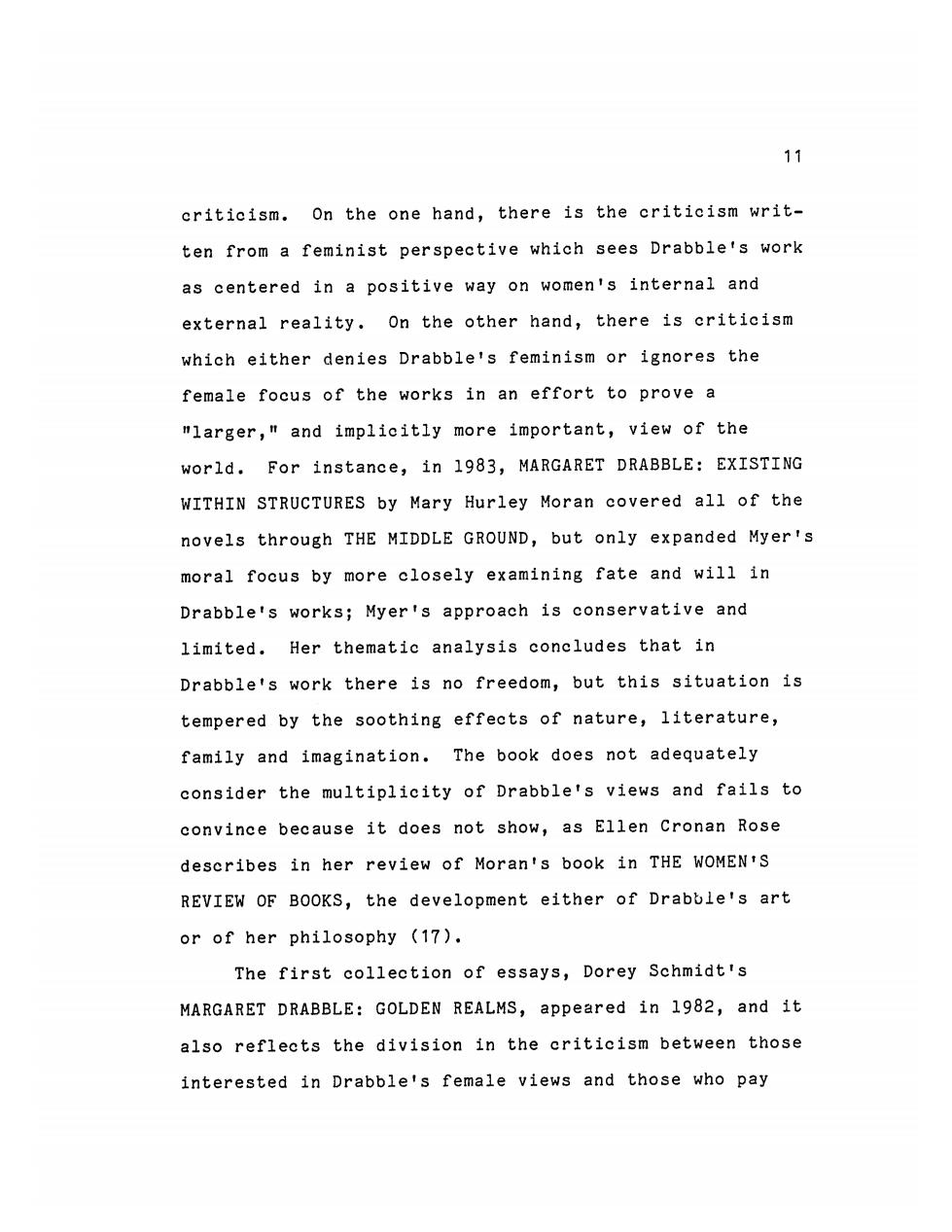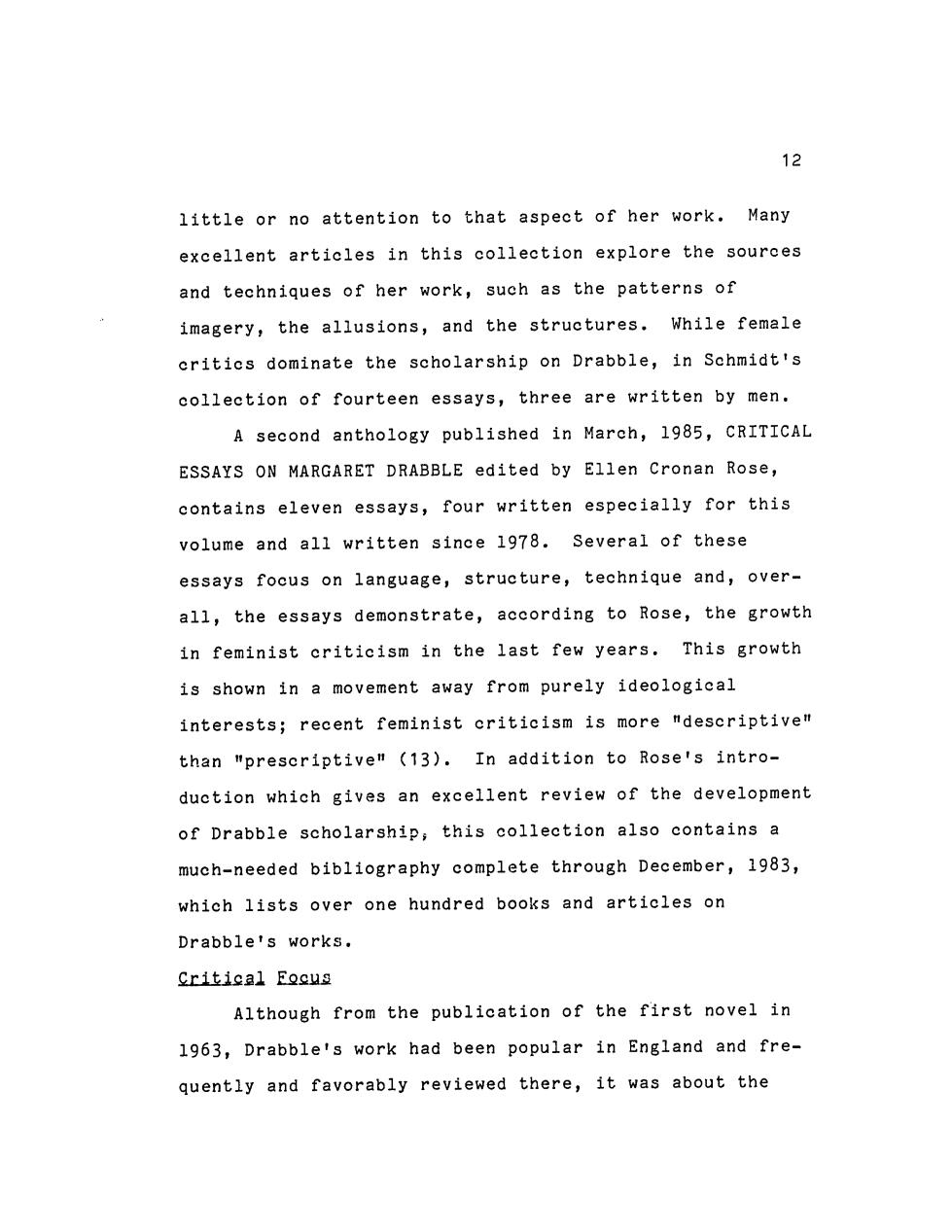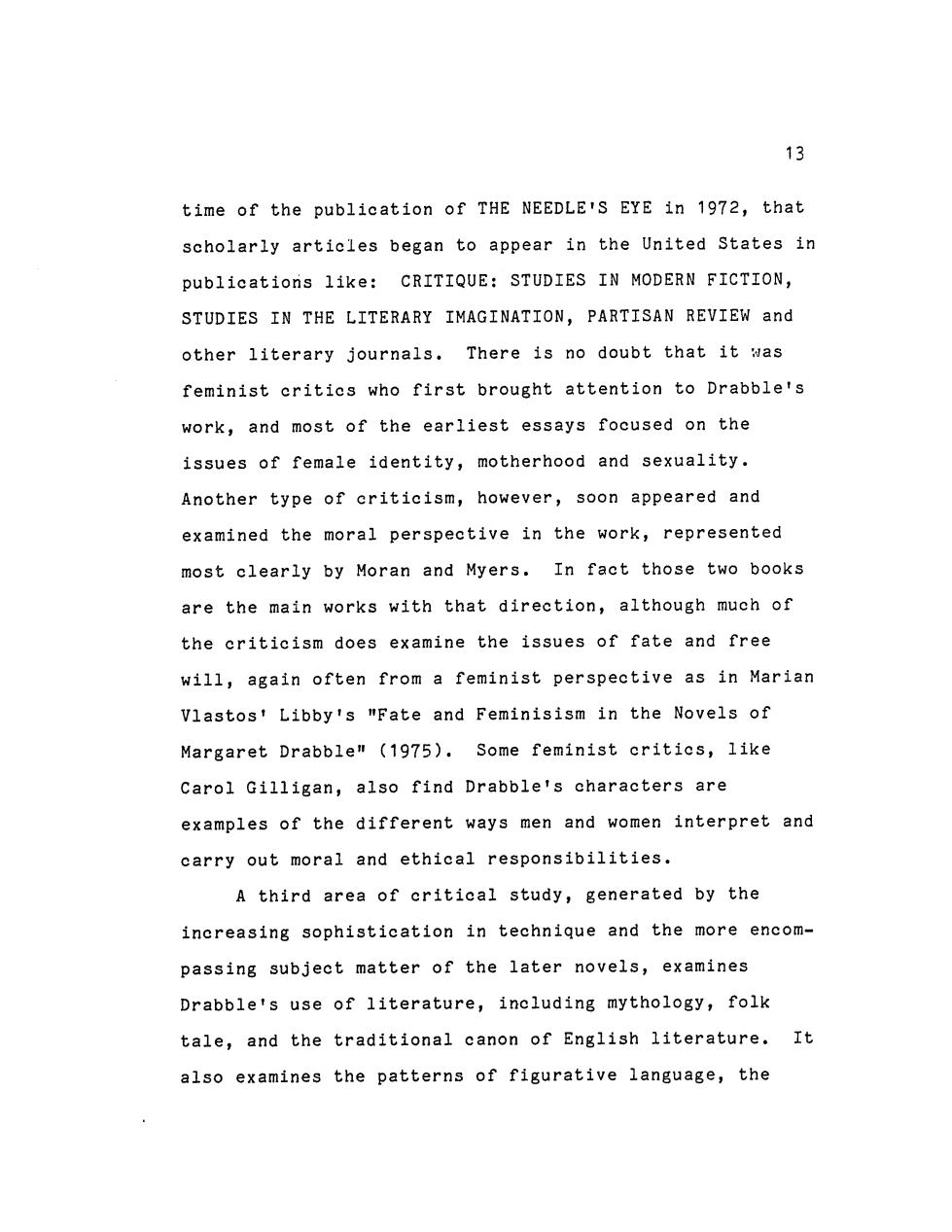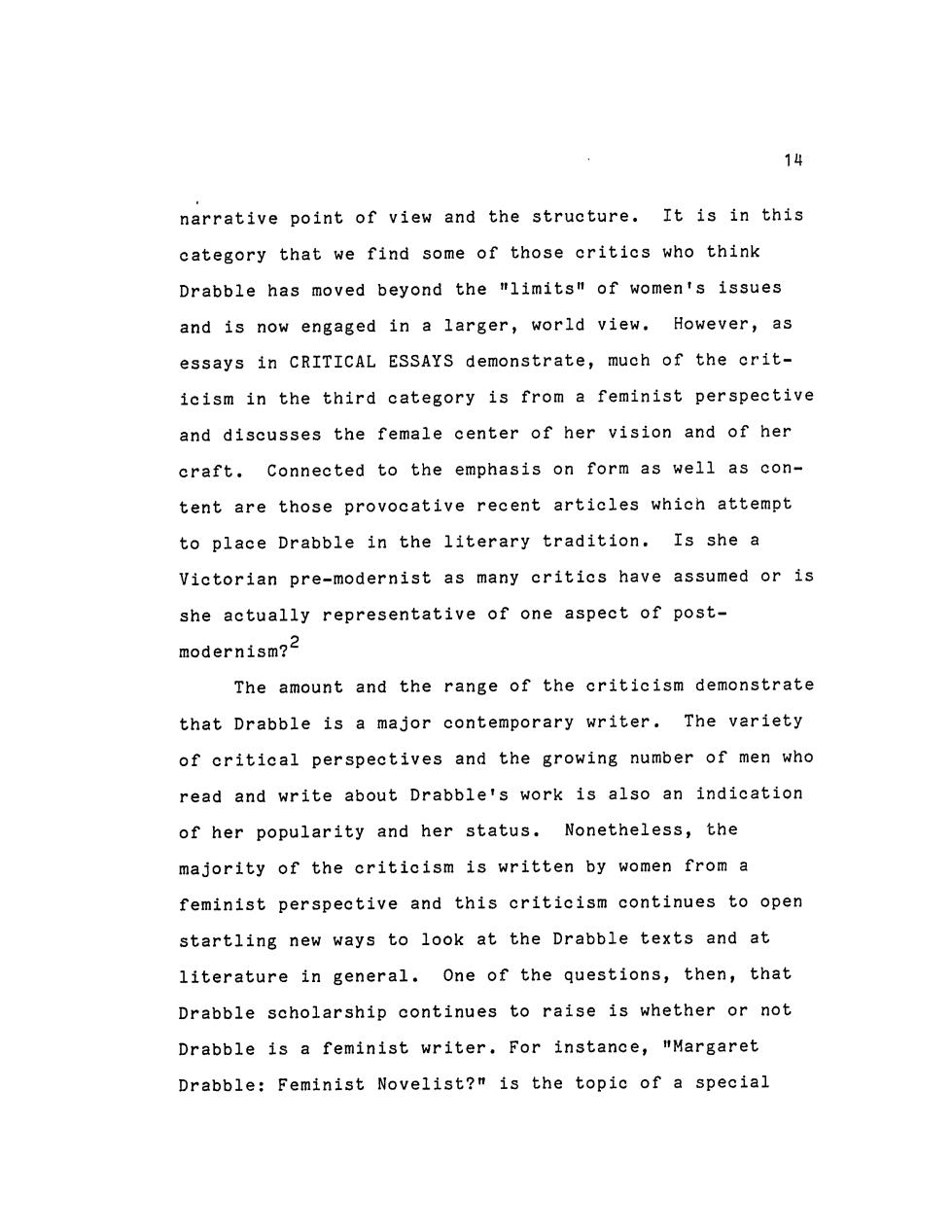
11 criticism.On the one hand,there is the criticism writ- ten from a feminist perspective which sees Drabble's work as centered in a positive way on women's internal and external reality.On the other hand,there is criticism which either denies Drabble's feminism or ignores the female focus of the works in an effort to prove a "larger,"and implicitly more important,view of the world.For instance,in 1983,MARGARET DRABBLE:EXISTING WITHIN STRUCTURES by Mary Hurley Moran covered all of the novels through THE MIDDLE GROUND,but only expanded Myer's moral focus by more closely examining fate and will in Drabble's works;Myer's approach is conservative and limited.Her thematic analysis concludes that in Drabble's work there is no freedom,but this situation is tempered by the soothing effects of nature,literature, family and imagination.The book does not adequately consider the multiplicity of Drabble's views and fails to convince because it does not show,as Ellen Cronan Rose describes in her review of Moran's book in THE WOMEN'S REVIEW OF BOOKS,the development either of Drabble's art or of her philosophy (17). The first collection of essays,Dorey Schmidt's MARGARET DRABBLE:GOLDEN REALMS,appeared in 1982,and it also reflects the division in the criticism between those interested in Drabble's female views and those who pay

12 little or no attention to that aspect of her work.Many excellent articles in this collection explore the sources and techniques of her work,such as the patterns of imagery,the allusions,and the structures.While female critics dominate the scholarship on Drabble,in Schmidt's collection of fourteen essays,three are written by men. A second anthology published in March,1985,CRITICAL ESSAYS ON MARGARET DRABBLE edited by Ellen Cronan Rose, contains eleven essays,four written especially for this volume and all written since 1978.Several of these essays focus on language,structure,technique and,over- all,the essays demonstrate,according to Rose,the growth in feminist criticism in the last few years.This growth is shown in a movement away from purely ideological interests;recent feminist criticism is more "descriptive" than "prescriptive"(13).In addition to Rose's intro- duction which gives an excellent review of the development of Drabble scholarship;this collection also contains a much-needed bibliography complete through December,1983, which lists over one hundred books and articles on Drabble's works. Critical Focus Although from the publication of the first novel in 1963,Drabble's work had been popular in England and fre- quently and favorably reviewed there,it was about the

13 time of the publication of THE NEEDLE'S EYE in 1972,that scholarly articles began to appear in the United States in publications like:CRITIQUE:STUDIES IN MODERN FICTION, STUDIES IN THE LITERARY IMAGINATION,PARTISAN REVIEW and other literary journals.There is no doubt that it was feminist critics who first brought attention to Drabble's work,and most of the earliest essays focused on the issues of female identity,motherhood and sexuality. Another type of criticism,however,soon appeared and examined the moral perspective in the work,represented most clearly by Moran and Myers.In fact those two books are the main works with that direction,although much of the criticism does examine the issues of fate and free will,again often from a feminist perspective as in Marian Vlastost Libby's "Fate and Feminisism in the Novels of Margaret Drabblem (1975).Some feminist critics,like Carol Gilligan,also find Drabble's characters are examples of the different ways men and women interpret and carry out moral and ethical responsibilities. A third area of critical study,generated by the increasing sophistication in technique and the more encom- passing subject matter of the later novels,examines Drabble's use of literature,including mythology,folk tale,and the traditional canon of English literature.It also examines the patterns of figurative language,the

14 narrative point of view and the structure.It is in this category that we find some of those critics who think Drabble has moved beyond the "limits"of women's issues and is now engaged in a larger,world view.However,as essays in CRITICAL ESSAYS demonstrate,much of the crit- icism in the third category is from a feminist perspective and discusses the female center of her vision and of her craft.Connected to the emphasis on form as well as con- tent are those provocative recent articles which attempt to place Drabble in the literary tradition.Is she a Victorian pre-modernist as many critics have assumed or is she actually representative of one aspect of post- modernism?2 The amount and the range of the criticism demonstrate that Drabble is a major contemporary writer.The variety of critical perspectives and the growing number of men who read and write about Drabble's work is also an indication of her popularity and her status.Nonetheless,the majority of the criticism is written by women from a feminist perspective and this criticism continues to open startling new ways to look at the Drabble texts and at literature in general.One of the questions,then,that Drabble scholarship continues to raise is whether or not Drabble is a feminist writer.For instance,"Margaret Drabble:Feminist Novelist?"is the topic of a special

15 session on Drabble at the 1985 Modern Language Association. Feminist Novelist? It is highly unlikely,of course,that the parti- cipants of that session will settle the issue.One of the reasons for the difficulty of answering this question is that by her remarks and in her fiction Drabble eludes categorization.For instance,in 1979,Iris Rozencwajg asked if she were involved in the Women's Movement,and she replied she found the Movement interesting,but "It's not something I want to give much of my life or time to. I feel that I'm doing it all on me [sic]own anyway--I just don't feel I need it myself"(347).And to Diana Cooper-Clark,as late as 1980,she said she didn't read much feminist criticism "because it rather confuses the mind when you're writing."She explained that she was reluctant to have critics dictate her books.For instance,she felt that Kate's being alone at the end of THE MIDDLE GROUND might be viewed as feminist or it might be viewed as failure.But what was important to Drabble was "that that is what happened to this woman during the course of this book,and that it was true to her situation in life.The truth is more important than idelology" (70)